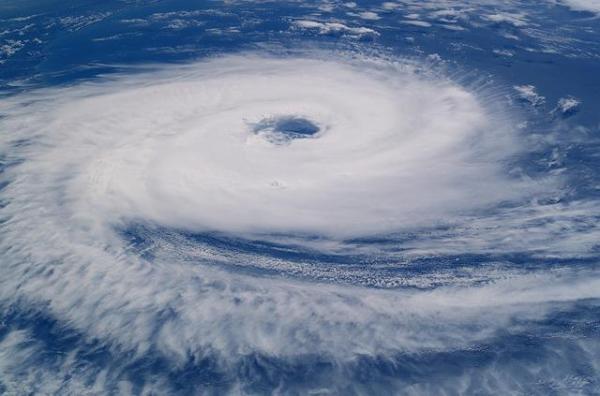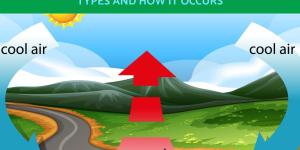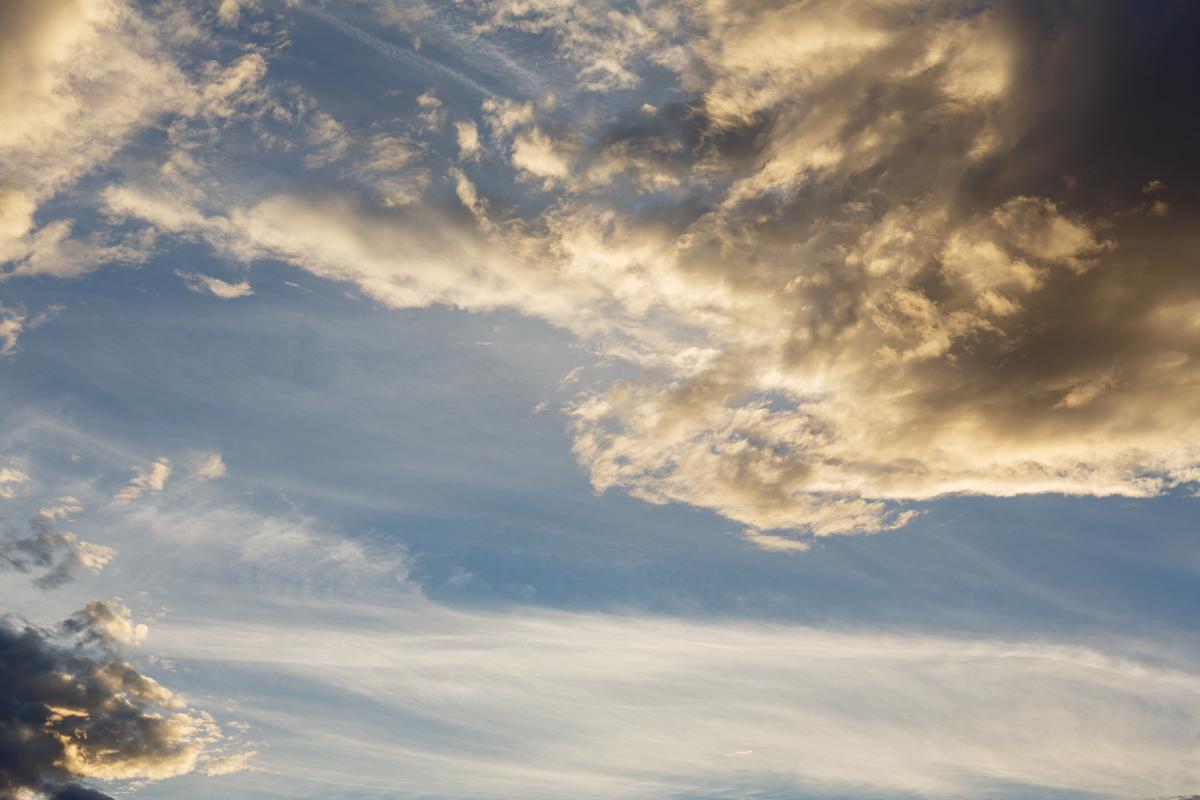Cyclone and Anticyclone Differences and Types


Air masses move differently in our Earth's atmosphere, with varying effects on the spaces beneath them. Specifically, they can influence weather patterns which can be disruptive or beneficial to both terrestrial and aquatic ecosystems. Cyclones are one of the most significant types of air mass which are characterized by low pressure and their rotational movement. Anticyclones are also rotational, but they are associated with high pressure. The Earth's atmosphere is in constant motion, caused by fluctuations of warm air flowing from the tropics to the poles where it then cools. Atmospheric current can undergo changes which affect their temperature and humidity, influencing the formation of cyclones and anticyclones.
We learn more with thedailyECO about this formation and more by looking at cyclone and anticyclone differences and types.
What is the Coriolis effect?
Before we learn about cyclone and anticyclones, we need to provide some background on the Coriolis effect. This effect has a great bearing on atmospheric and meteorological events such as these.
The rotation of the Earth causes the air flowing through the troposphere to curve. This means the air masses are subject to a force that diverts their path. This force is commonly known as the Coriolis effect. Its result is that the rising columns of air in the Northern Hemisphere will deflate in a clockwise direction and those in the Southern Hemisphere will deflect in the opposite direction (anti-clockwise).
This Coriolis effect produces very important directional movements not only in the air, but also in masses of water. It is an effect that becomes enhanced the closer it occurs to the equator. This is because the surface of the Earth in that area is larger and it also happens to be the area furthest from the planet's center.
Discover more about what is the cause of the Coriolis effect with our related article.
What is a cyclone?
Cyclones are a relatively common meteorological phenomenon, characterized as a large air mass powered by strong winds moving in a rotational manner. These strong winds are formed in areas with low pressure, specifically less than 1013 Pa. Such low pressures generate winds that attract other masses of atmospheric air with higher pressure.
Cyclonic air flow originates when the sea surface is at a high temperature. Under these conditions, the warm air rises from the top of the water and brings a lot of moisture as it does so. As the moisture in the air rises, it condenses into clouds.
The clouds that can form from this cyclonic flow move in large circles that rotate against themselves. Doing so causes strong winds to develop. In the case of a cyclone developing into a hurricane, it is the center of this rotational movement which becomes the eye of the storm. Such strength of the wind is a result of the great energy they possess when the heat from the water vapor is released when it condenses.
Although cyclones are essentially any large-scale atmospheric system which rotates around a center with low pressure, they can vary greatly in terms of intensity and size. They can become as wide as 124 miles (200 km) in diameter with wings 30 to 155 mph (50 to 250 kmph). They can occur over land or sea, as well as other bodies of water. Depending on where they start, they tend to lose strength when they reach land or sea.
Meteorological phenomena which accompany cyclonic atmospheric movement include enormous waves and large displacements of water masses. This is why cyclones often cause major floods in tropical areas. They are even capable of transporting very heavy objects of long distances.
Discover more about the causes and consequences of floods with our related article.

Types of cyclones
Now we know the basic definition of cyclones, we can look at some of the different types which can form. They include:
- Tropical
- Extratropical
- Subtropical
- Polar
- Mesocyclones
Of this classification, the most important is the tropical cyclone. These types of cyclones are further subdivided into five categories based on the speed and aggressiveness of the winds. Depending on its strength, tropical cyclones can be called a tropical depression, tropical storm or hurricane. The one with the greatest speed and aggressiveness is the hurricane, which causes very strong winds and great damage to infrastructure.
Although tropical cyclones can cause the destruction of homes and natural habitats, they can also provide very positive aspects. These include ending periods of drought or regenerating vegetation cover. The latter is because they eliminate older or weaker trees to allow for new ones to develop.
In reference to extratropical cyclones, we can say that they are associated with a low pressure system located between the tropics and the poles. The formation of these types of cyclones depends on the contrast between cold and warm air masses. If there is a very marked drop in atmospheric pressure, this type of cyclone is called explosive cyclogenesis. It can produce great very destructive phenomena such as floods or landslides. Discover more about the types of landslides and their impact with our related guide.
Regarding subtropical cyclones, they have a fusion of characteristics of the two previous types. Their characteristics will depend on their place of origin. In reference to the polar cyclone, it turns out to be a low pressure system with a fairly large diameter that causes strong winds. Even so, it has a shorter life than that of tropical cyclones, since it can reach its peak in 24 hours. This type of cyclone is perhaps more commonly known as a polar vortex.
Finally, the mesocyclone is an air vortex that forms during a convective storm. It is usually associated with thunderstorms. This phenomenon forms in conditions of high instability and when there are strong winds at high altitudes, but it is very rare to see.
What are anticyclones?
An anticyclone is an area of high pressure (greater than 1013 Pa) in which the atmospheric pressure is higher than that of the surrounding air. The pressure increases from the periphery to the center. It is most often associated with typical stable weather, with clear skies and sunshine.
The air column of an anticyclone is more stable than the air around it. In turn, the air that descends downward produces a phenomenon known as subsidence. This means that it prevents the formation of precipitation. It is very important to take into account that the way the air will descend will vary depending on the hemisphere in which it is located.
These anticyclonic flows develop more easily in summer, further aggravating the dry season. They tend to be irregular phenomena, both in their form and behavior. This is unlike cyclones which are more easily predictable. In general, anticyclones can be classified into four groups or types.
Discover another atmospheric phenomenon in our article explaining what is an atmopsheric river?
Types of anticyclones
As stated above, the effects of an anticyclone will depend on the type that is generated. These types include:
- Subtropical highs
- Continental polar high
- Highs between the series of cyclones
- Highs produced by the invasion of polar air
The first are the subtropical highs which turn out to be large and elongated anticyclonic flows. They are located in the subtropics and normally stationary or very slowly moving. In this group, the Azores high anticyclone should be highlighted. This is a very important and dynamic anticyclone that conditions the climate of the area. It greatly influences the storms that will arise when temperatures drop.
Secondly, there are anticyclones called continental polar highs which form in winter on the continents closest to the north. They move until they reach warmer waters and are absorbed by the subtropical anticyclone.
The third group of anticyclones are the highs between the series of cyclones. These are relatively small in extent. As their name indicates, they appear between cyclones.
The last anticyclonic group is that of the highs produced by the invasion of polar air. As their name also indicates, the cold air adsorbs the heat of the warmer waters. After a few days it transforms into a subtropical anticyclone.

Differences between cyclones and anticyclones
Now we have an understanding of both cyclones and anticyclones, we can have a better understanding of their differences. These can be summarized as:
- Movement: cyclones have a strong rotational movement which moves counterclockwise in the Northern Hemisphere and clockwise in the Southern Hemisphere. Anticyclones move in the opposite direction, with a clockwise movement in the Northern Hemisphere and counterclockwise movement in the Southern Hemisphere.
- Wind force: generally speaking, the cyclonic winds are strong to very strong and associated with meteorological phenomena such as hurricanes. The winds of anticyclones are not as strong.
- Pressure: cyclones move around a center of ow pressure, whereas anticyclones move around a center of high pressure.
- Weather phenomena: while there are various different types, the formation of cyclones can result in very unsettled meteorological phenomena such as hurricanes. Conversely, anticyclonic weather is usually stable and clement.
Now you know the differences and types of cyclones and anticyclones, you may want to learn about another atmospheric phenomenon associated with air currents. Do so with our article explaining what is thermal inversion?
If you want to read similar articles to Cyclone and Anticyclone Differences and Types, we recommend you visit our Meteorological phenomena category.







